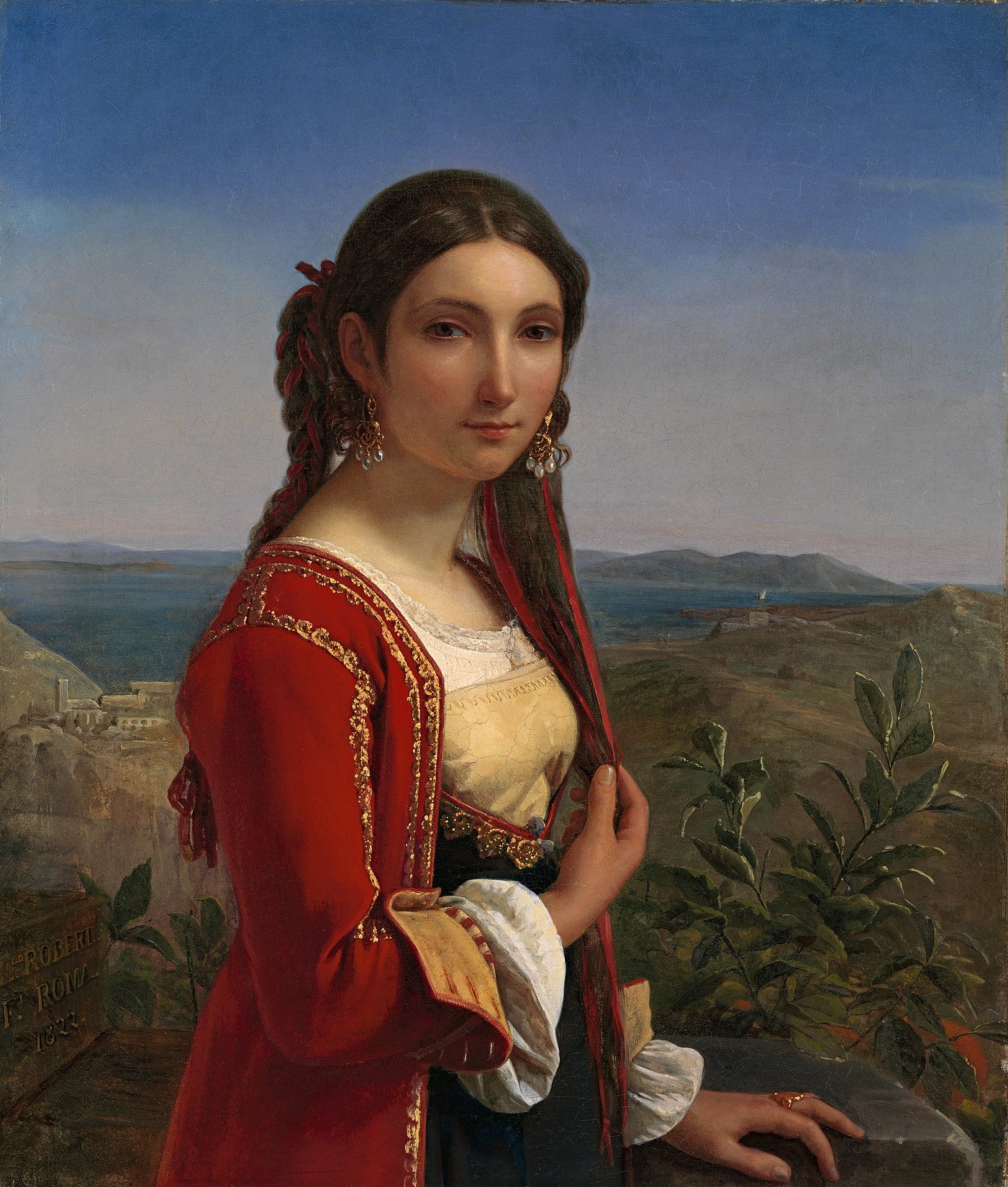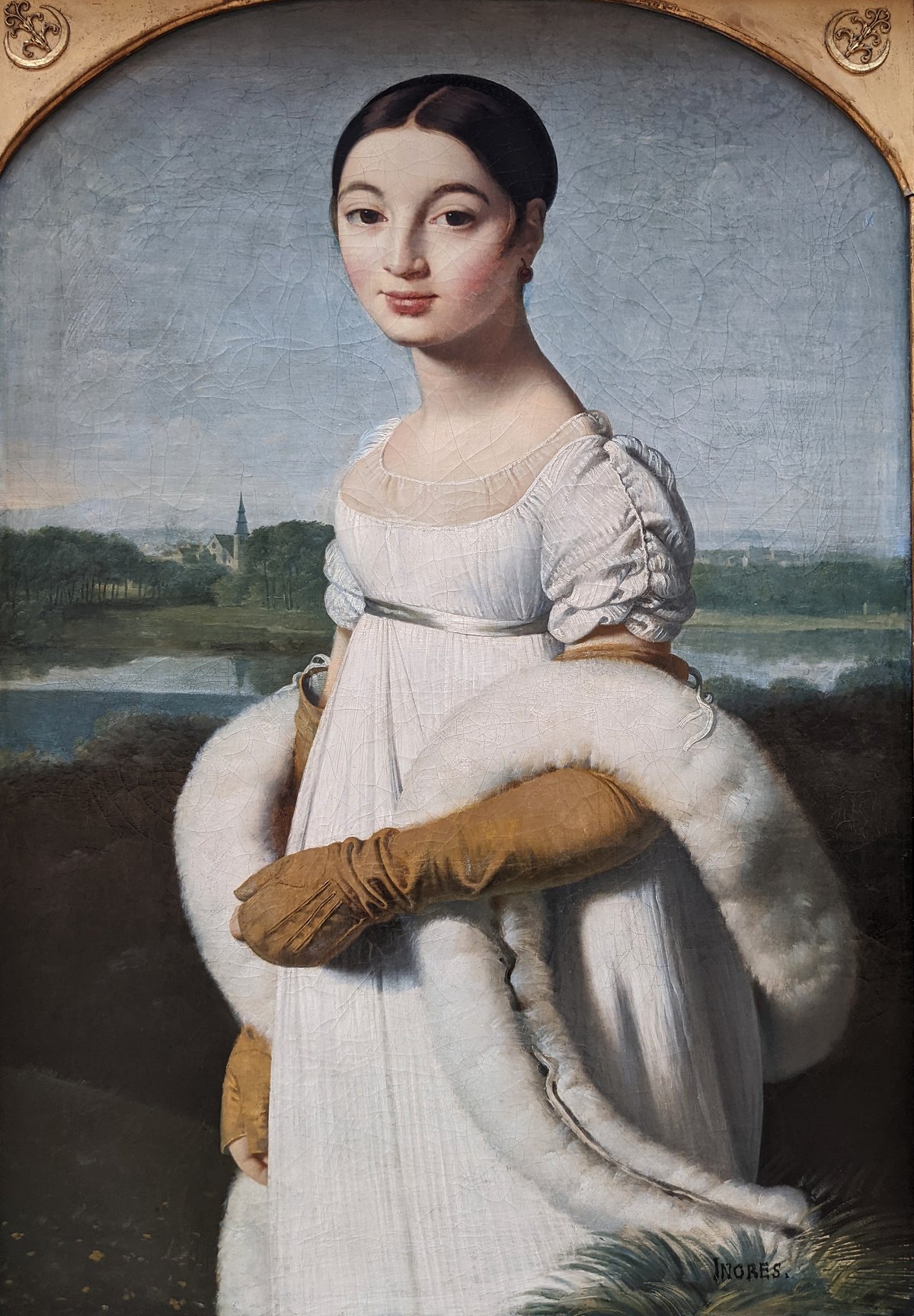Louis-Léopold Robert
A Girl from Procida, 1822

Louis-Léopold Robert
A Girl from Procida, 1822
Kunst Museum Winterthur, Stiftung Oskar Reinhart, Ankauf, 1949
Foto: SIK-ISEA, Zürich (Philipp Hitz)
This Italian girl in the traditional costume of Procida marks the beginning of Louis-Léopold Robert's rise and success as a painter – a success that soon spread from France and Italy to Prussia and Russia. The artist from Suisse Romande had studied in Paris with famous history painter and classicist Jacques-Louis David, but found his domicile of choice and subject matter in the bel paese. Here, he elevated simple Italian folk life from the lower echelons of the arts to the sublime realms of painting. He created folkloristic idylls with brigands, fishermen, and peasant girls, such as our idealized portrait of a girl from Procida.
The painting is characterized by a clear, cohesive composition and warm colouring. In a proud pose, the Italian woman turns her head towards us with a gentle smile as she rises above the horizon line into the pure blue of the sky. This may explain why the work is still referred to today as the «Mona Lisa of Romanticism».
Here, Robert chose a costume with rich colour tones that contrast with the rather cool tones of the landscape. He had bought the dress and other costumes on the island of Procida during a study trip to the Gulf of Naples and had his models pose in these garments in his studio. When he painted A Girl from Procida, however, he not only had a model in mind, but probably also artistic role models such as Leonardo, Raphael and, above all, the Frenchman Ingres. The latter's Mademoiselle Caroline Rivière, whom Robert probably knew from the Louvre, bears astonishing similarities. However, while Ingres portrayed a lady of the upper classes in a befitting costume, Robert imbued a simple country girl with the attributes of dignity and grace of the great Italian Renaissance painters.

Jean-Auguste-Dominique Ingres, Mademoiselle Caroline Rivière, 1805
Musée du Louvre, Département des Peintures
On the invitation of Prussian Consul General Bartholdy, Robert was able to exhibit his painting at famous Palazzo Zuccari in Rome. Today, this building houses the Bibliotheca Hertziana, the world's only centre for the study of Italian art history. A Girl from Procida was eventually purchased by the Prussian king himself upon advice by Alexander von Humboldt.
While Robert enjoyed great success with his art, he was less fortunate in his private life. He committed suicide at the height of his fame, probably out of lovesickness. His love for French imperial princess Charlotte Napoléone Bonaparte, who had learnt the technique of lithography from Robert, remained unrequited.


